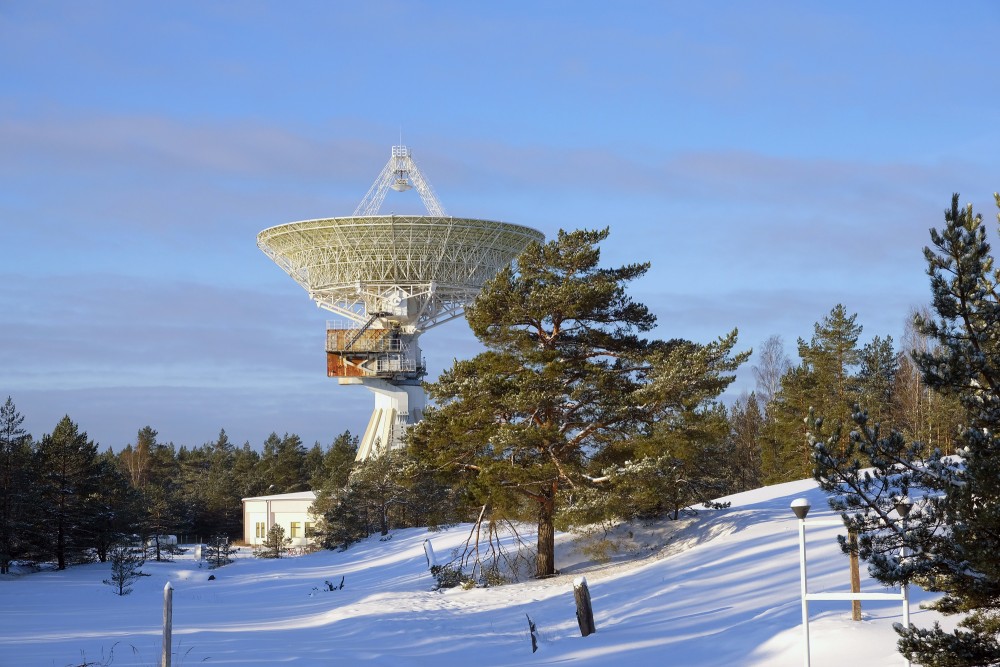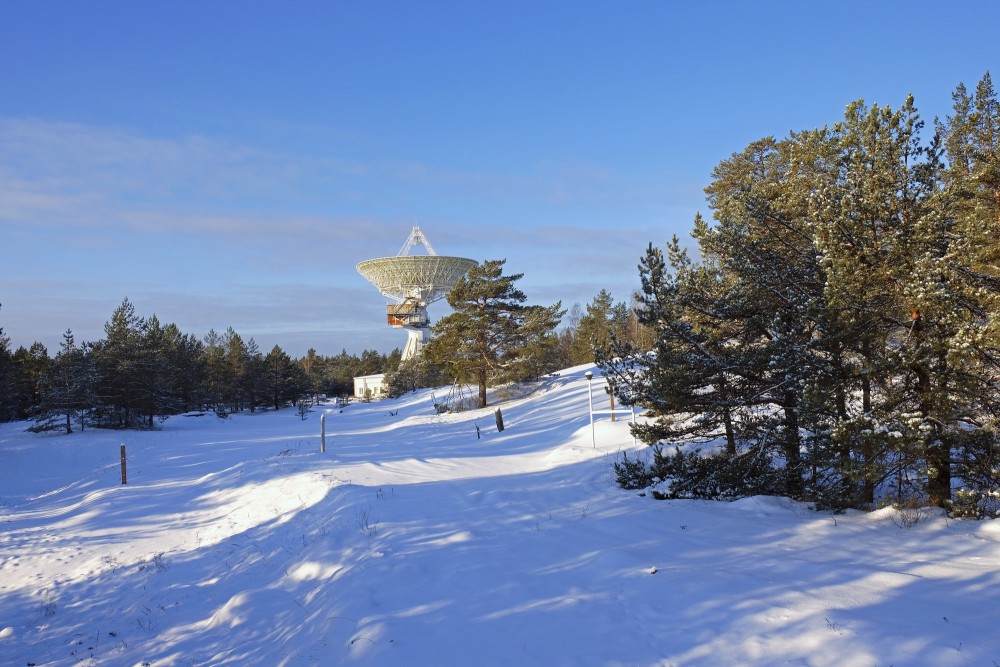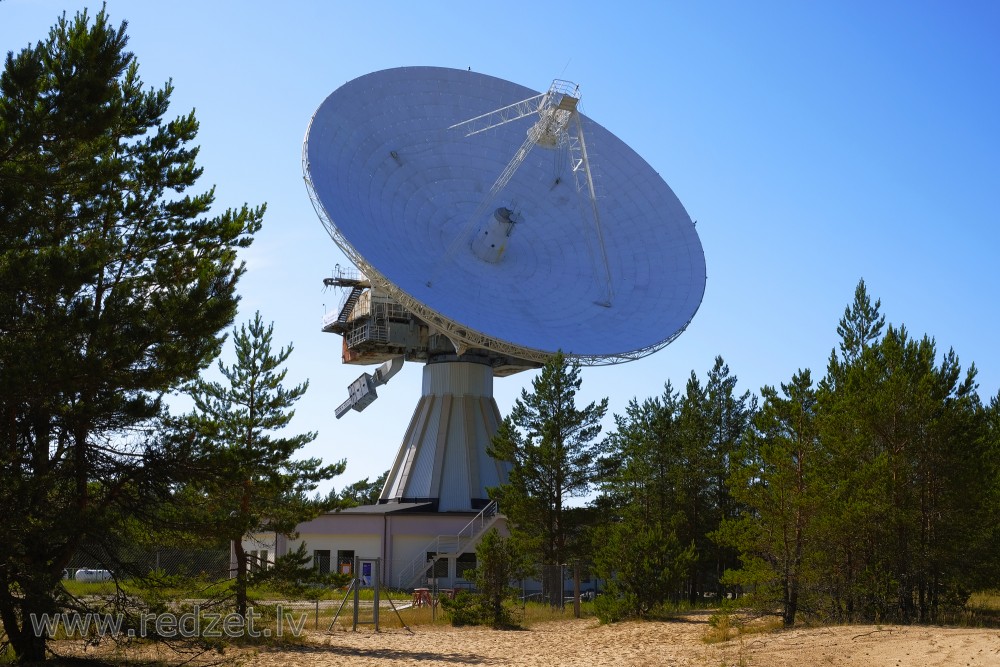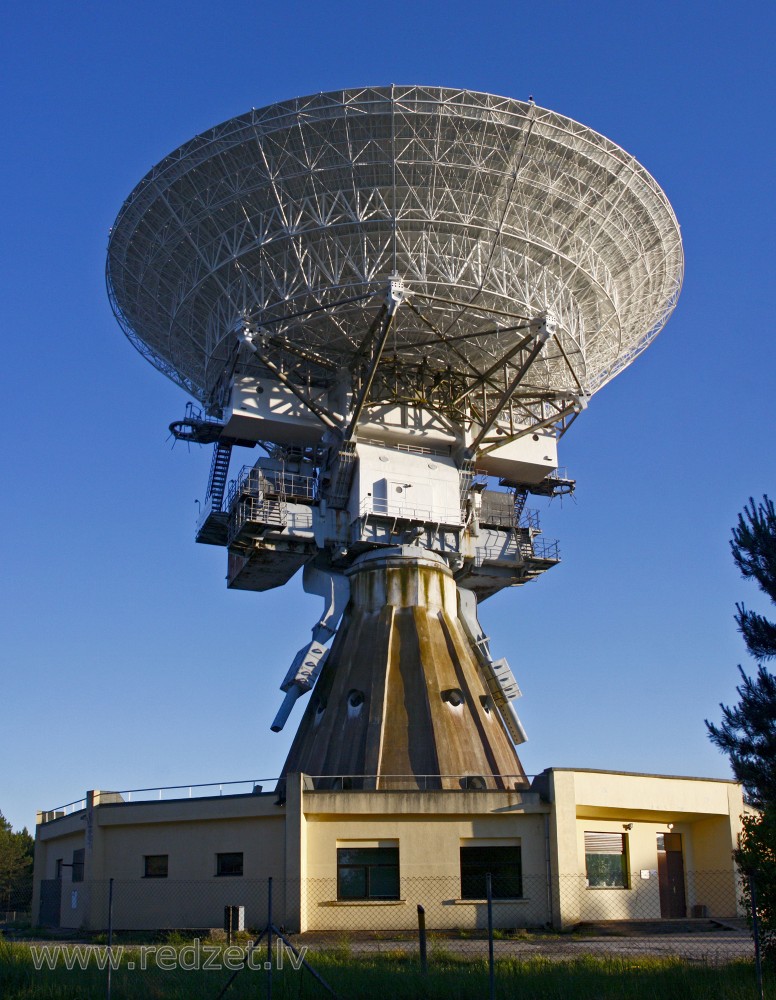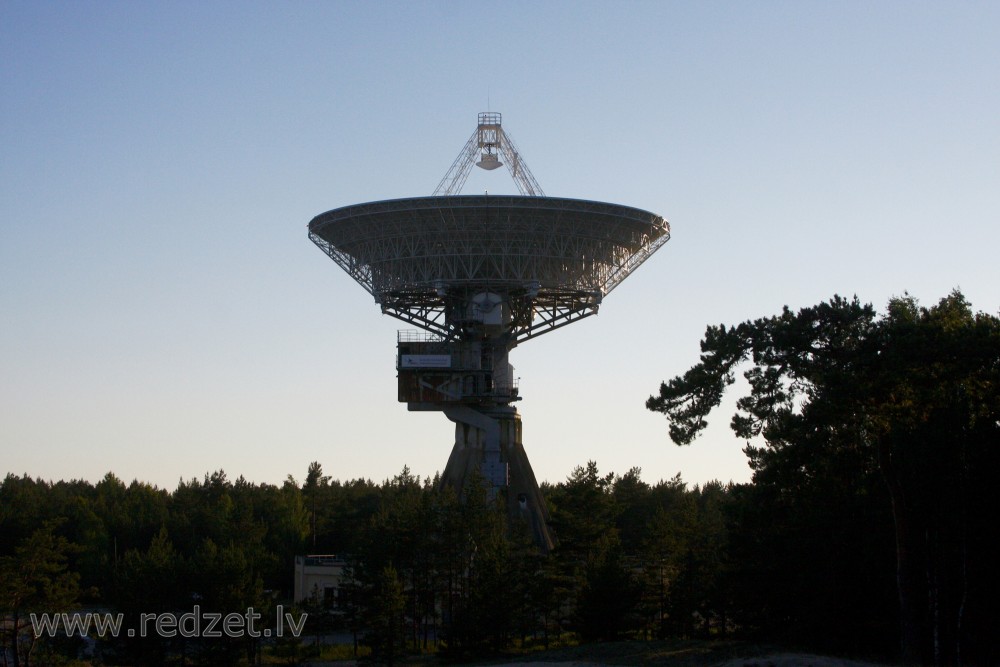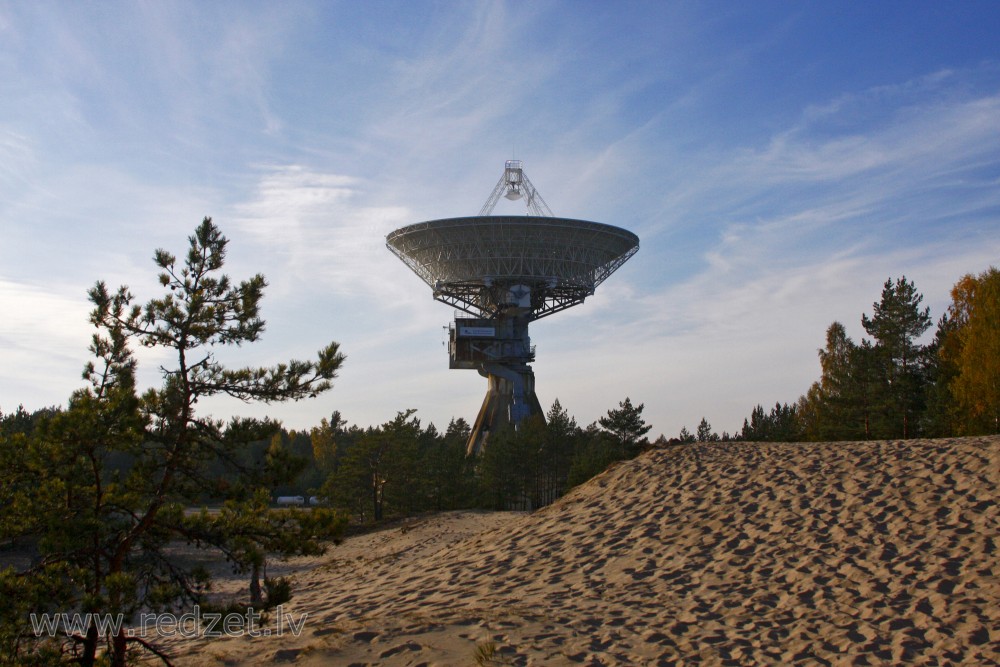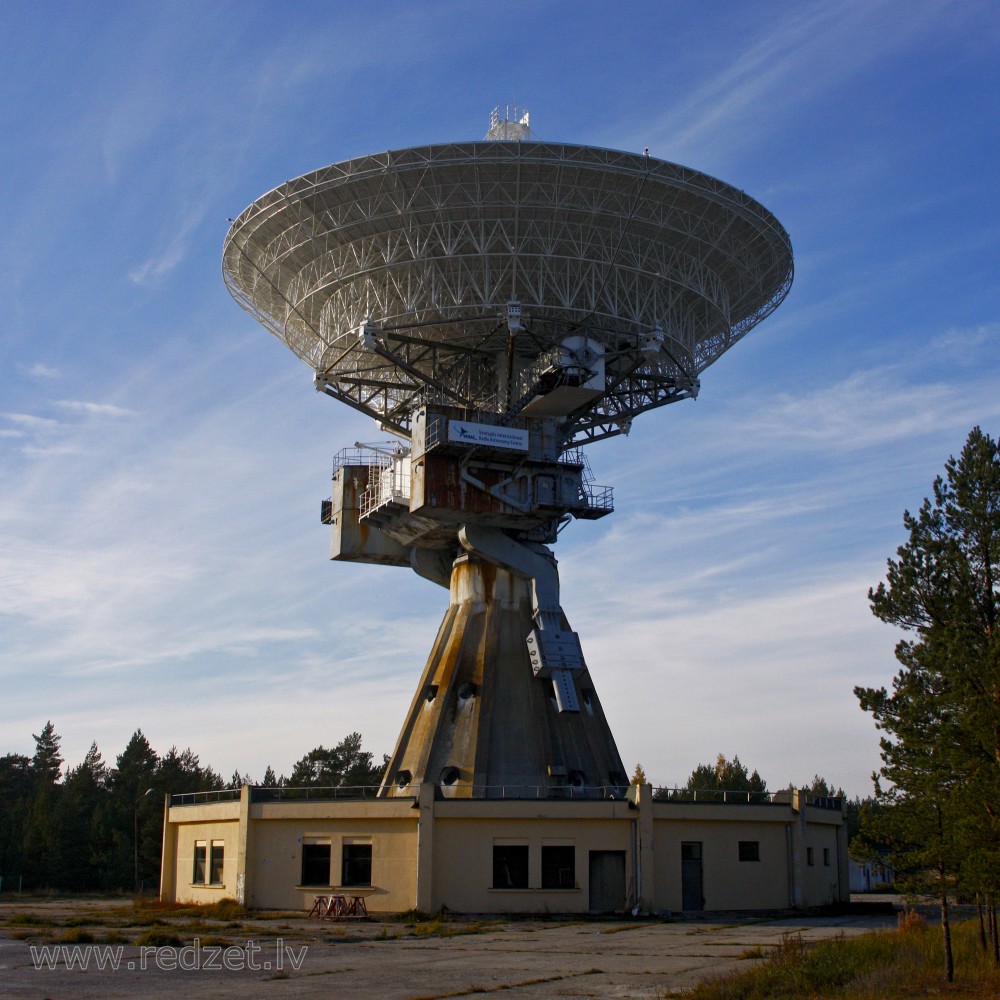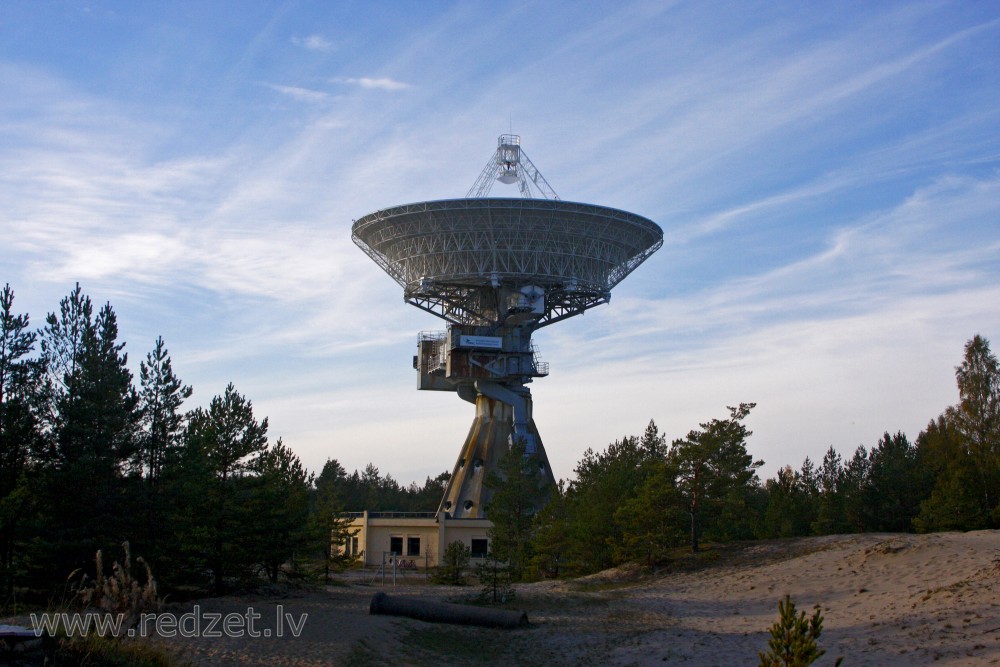Irbene radio telescope
The world’s eighth-largest radio telescope can be found in Kurzeme, not very far from the seaside between Kolka and Ventspils. Even today, the massive dish of the radio telescope, used during the Cold War years by the So
During the Soviet era, this site was dubbed The Starlet; it was extremely secret and served to intercept radio signals and telephone conversations in NATO countries. Soon after Latvia’s independence was restored, in 1994, the Russian military personnel left this place. However, as they withdrew, they smashed the equipment, poured acid into the electric motors and chopped up the cables. Fortunately, there had been no order to blow up the enormous antenna dishes.
With assistance from the European Union, the army radar has been transformed to serve scientific purposes: now the 32-metre wide antenna, weighing 600 tonnes, is pointed towards the most remote corners of space. It is the largest radio telescope in Northern Europe, which can “see” sound just like a bat, catches radiation unseen by the human eye and turns it into an image. Astronomers observe the Sun this way, as well as the oldest radiation in existence: particles that originated billions of years ago in the wake of the Big Bang, the moment of the birth of the universe.
A second radio telescope has also been renovated in Irbene (16 metres in diameter), which will soon be used to track the first Latvian satellite, currently being built by Latvian students in cooperation with Germans at the University of Bremen.
www.kurzeme.lv
RT-32
RT-32 is a 32-metre (105 ft) parabolic radio telescope. It is made up of over 20,000 components, and the central cone weighs 80 tonnes. The fully steerable telescope observes at centimetre wavelengths. The combination of size and precision engineering makes the larger dish especially valuable to scientists. The structure was built by a naval factory in Ukraine, and the interiors are reminiscent of a ship.
The telescope is mounted on a 25-metre-high (82 ft) tower. It has an 11.45-metre (37.6 ft) focal length, and a 2.5-metre (8.2 ft) secondary mirror.
In its first upgrade since being constructed, RT-32 was temporarily dismantled towards the end of 2014, and moved to a purpose-built shelter for restoration. The restoration includes re-welding the panels, replacing rusted parts, and repairing damage caused by the passage of time, water ingress and lightning strikes. The telescope will also be upgraded to enable it to be controlled remotely, and to be able to make more precise and sensitive observations. The telescope will be used in Very-long-baseline interferometry. The restoration cost around €16 million overall, with the restoration of the telescope panels costing around €1.5 million; the restoration was funded by the European Union and Latvian state and Ventspils district governments. The dish of the telescope was remounted in June 2015, with the restoration due to be completed in October 2015.
RT-16
The centre also has a 16 metres (52 ft) parabolic radio telescope.
en.wikipedia.org
